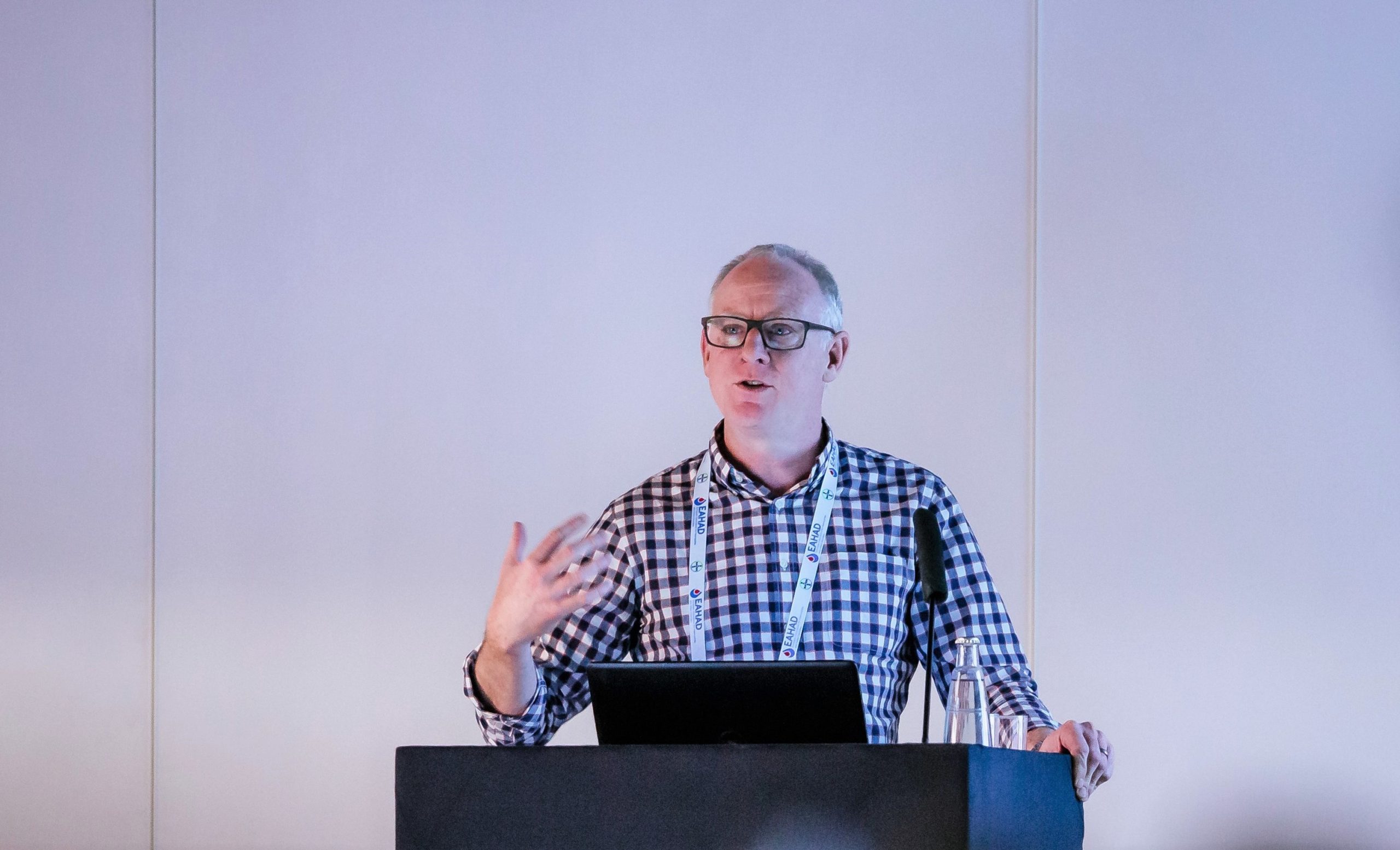This past February, Dr David Stephensen became the new Physiotherapists Committee Chair, taking over from Dr Sébastien Lobet. We recently had the opportunity to talk with Dr Stephensen and asked him among other things about his background, his motivation in helping establish the committee, his plans for the future, as well as the challenges associated with physiotherapy in haemophilia and bleeding disorders in Europe.
Could you tell us a bit more about yourself?
I was born in Queensland, Australia and studied physiotherapy at the University of Queensland, graduating in 1990. In 1997, I moved to the United Kingdom and have been working in haemophilia ever since.
I am a physiotherapist at the Kent Haemophilia and Thrombosis Centre and the Haemophilia Centre at the Royal London Hospital in London. I have a strong interest in studying the impact of disease on the biomechanical and neuromuscular aspects of physical performance. I completed my PhD in 2010 where I developed reliable protocols for measuring and analysing temporal-spatial, kinematic, kinetic and electromyographic characteristics of walking with 3D motion capture, dynamic muscle strength with an isokinetic dynamometer and whole muscle size and architecture with ultrasound imaging.
In 2011, I was awarded a post-doctoral Clinical Lectureship in which I transferred laboratory work to the clinical setting, investigating relationships between bleeding frequency, walking patterns, muscle strength and motor performance. I am passionate about increasing the research capacity of the allied health professions. I am the research lead for the Haemophilia Chartered Physiotherapists Association in the UK and was a steering group member of the Bleeding Disorders Priority Setting Partnership (PSP), in partnership with the James Lind Alliance (JLA) with the aim of identifying key research priorities for people with bleeding disorders. I was recently appointed Deputy Director of Research & Innovation at a large NHS healthcare Trust in the UK.
How did you become involved in haemophilia treatment?
I met my first person with haemophilia as a newly graduated physiotherapist in Australia. He was undergoing bilateral knee replacements and I was involved in his rehabilitation. From that point, I was keen to be involved in ways of monitoring and maintaining musculoskeletal health of people with haemophilia.
You are one of the original EAHAD Physiotherapists Committee members. What gave you the motivation to help form the Committee?
Despite haemophilia being a bleeding disorder, most of the impacts are musculoskeletal and affect the way people are able to move and go about their everyday activities. I am passionate that all people with haemophilia wherever they live should have the opportunity to access physiotherapy and that physiotherapy interventions are evidence based.
EAHAD gave us a fantastic opportunity to promote physiotherapy to other healthcare professions and educate physiotherapists about haemophilia. Because haemophilia is a rare disease, learning through shared experiences and collaboration is important.
What is in your opinion the biggest achievement of the Committee so far?
Establishing the network of regional coordinators and maintaining their interest in haemophilia and commitment to the group has been the biggest achievement of the Committee so far. The regional coordinator provides a focal point for local physiotherapists. Thanks to the network, the committee has been able to attract more than 200 physiotherapists across Europe, who want learn more about haemophilia. If physiotherapists have knowledge about the disease, more people with haemophilia will get the opportunity to be treated by a physiotherapist.
You will be the Physiotherapists Committee Chair for the next two years. What are your plans for the Committee going forward?
I am really excited to be the next chair and build on the fantastic work of Piet de Kleijn and Sébastien Lobet. Our recent pan-European survey of 80 physiotherapists from 24 European countries found considerable heterogeneity exists in roles, responsibilities, and clinical practice of physiotherapists, particularly in access to and type of physiotherapy treatment provided, as well as large variability in skill set. My plans over the next 2 years are to continue to support and educate physiotherapists about haemophilia. Ways we can do that is to develop a core skills and capability framework to maximize early recovery, support self‐management and enablement in remaining active and independent; and encourage strong European collaborations to facilitate well designed research and evidence-based models of care.
The feedback for the EAHAD 2020 Pre-Congress Day Physiotherapists Sessions was very positive. What would you like to see next year at the EAHAD 2021 Pre-Congress Day, in Manchester, UK?
Presentations focusing on evidence-based care were a feature of our Pre-Congress sessions at EAHAD 2020. It was great to hear so many physiotherapists undertaking high quality novel and original research and I would like to see this continue at EAHAD 2021. I would like to see something about “what matters to people with haemophilia”, how we co-design services and interventions together with people with haemophilia for people with haemophilia.
We saw a lot of young physiotherapists attending this year’s EAHAD Congress. What is your advice for them?
Haemophilia is rare, so don’t be afraid to ask for advice. The EAHAD European physiotherapists network is a fantastic community that is always willing to share knowledge and experience. More importantly, ask patients what matters to them, listen to what they say and use each other’s knowledge and experience to work together to help them achieve their goals.
Last question: if you weren’t a physiotherapist specialising in haemophilia, what type of career would you have followed?
I could see myself as a billionaire traveling the world watching sports events. Seriously, it would have been a job with numbers, I liked maths at school.

